Spending a whole month in one city might sound like a luxury, but for a lot of travellers — especially remote workers and long-term nomads — it’s actually the smartest way to travel. You skip the rush, avoid burnout, and settle into a rhythm that feels more like living than vacationing.
When you stay somewhere for 30 days, you start to notice the small things. The local café remembers your order. You find your favourite grocery store. You figure out which days the market has the best fruit. It’s slower, cheaper, and way more satisfying than hopping between destinations every few days.
But not every city is great for a long stay. Some are expensive. Others don’t have reliable Wi-Fi or easy visa options. And a few just don’t make day-to-day life convenient. That’s why this guide focuses on cities that actually work well for a month-long stay — places with good infrastructure, affordable living costs, and enough going on to keep you interested without feeling overwhelming.
Whether you’re planning a workation, a creative break, or just want to experience a place in a deeper way, these 10 cities are all solid options. Each one comes with its own pros and cons, but they’ve all got what you need to live, not just visit — at least for a little while.
10 Cities to Spend a Month In

Chiang Mai, Thailand
Chiang Mai has been a go-to spot for long-term travellers and digital nomads for years — and for good reason. It’s affordable, laid-back, and surprisingly easy to settle into, even if it’s your first time in Asia. You can get by with minimal Thai, grab great food for a few dollars, and work from cafés or co-working spaces without ever worrying about the Wi-Fi.
Average monthly cost:
Around $700–1,000 depending on lifestyle. That covers a private apartment, meals out every day, SIM card, and transport. If you’re more frugal, you could easily come in under that.
Visa situation:
As of 2025, Thailand offers 60-day visa-free entry to many nationalities, with the option to extend once by 30 days at a local immigration office. Tourist visas can also be obtained in advance for longer stays. While some travelers still do ‘visa runs’ by exiting and re-entering the country, Thai immigration has tightened restrictions, especially for land border crossings. Additionally, all visitors must now complete the Thailand Digital Arrival Card (TDAC) online within 72 hours before arrival
Internet/Wi-Fi:
Generally excellent. Most cafés and apartments have strong connections. You’ll also find plenty of co-working spaces like Punspace and Yellow.
Pros:
- Very low cost of living
- Tons of digital nomads and remote workers
- Great street food and markets
- Mountains and nature close by
Cons:
- Burning season (roughly February to April) brings poor air quality
- Traffic and motorbikes can be chaotic in parts of the city
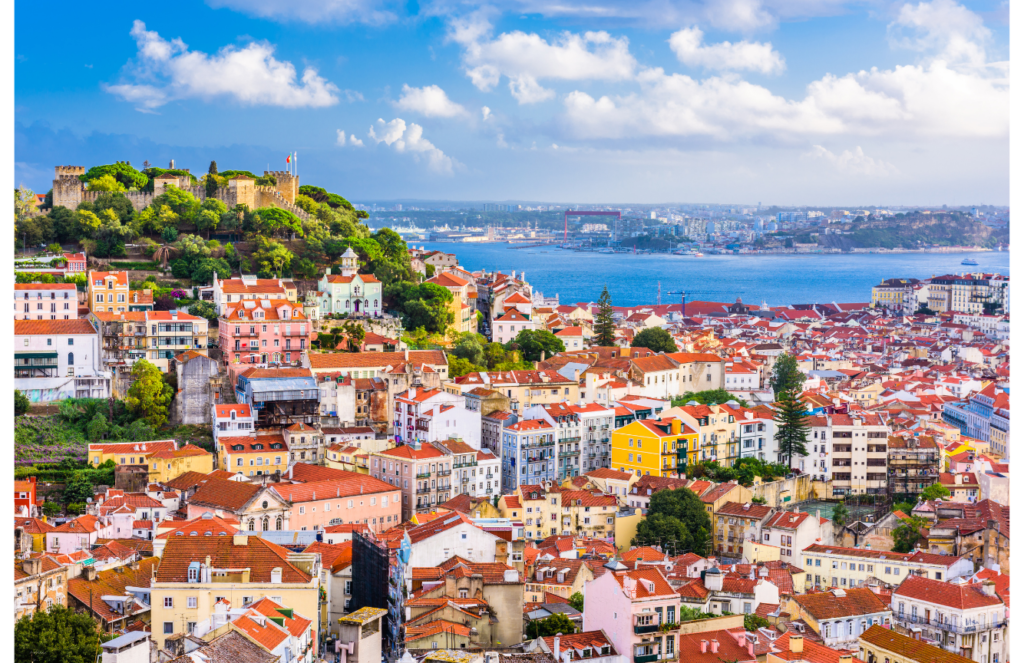
Lisbon, Portugal
Lisbon hits a sweet spot for long stays: it’s got history, great weather, a solid café scene, and it’s relatively affordable (at least by Western European standards). If you’re coming from the US or Northern Europe, life here often feels slower and sunnier — with plenty of espresso breaks in between. We have a blog post that tell which area you should stay in Lisbon here.
Average monthly cost:
Expect to spend around €1,200–€1,800, depending on your apartment and lifestyle. Eating out can be budget-friendly if you stick to local tascas (small restaurants), and monthly public transport passes are cheap and reliable.
Visa situation:
EU citizens have no restrictions. For others, the Schengen visa typically allows 90 days within any 180-day period. Portugal has also been exploring more visa options for digital nomads if you’re planning to stay longer.
Internet/Wi-Fi:
Wi-Fi is reliable in most apartments, hotels, and public places. Nearly every café has free access, and many public spaces — including some parks and transport hubs — offer open networks. If you want mobile data during your stay, local SIM cards from providers like Vodafone or NOS are easy to buy and come with good short-term plans.
Pros:
- Warm weather most of the year
- Good public transport and walkable neighbourhoods
- Friendly to English speakers
- Close proximity to beaches and weekend getaways
Cons:
- Housing costs have increased a lot in recent years
- Hills — lots of them. Your legs will notice.
- Can get crowded in peak tourist season
Local tips:
Look for short-term flats in neighbourhoods like Alfama (older, scenic), Graça (more local feel), or Campo de Ourique (quiet but central). And skip the tram queues — walk the route of Tram 28 instead if you want the views without the wait.
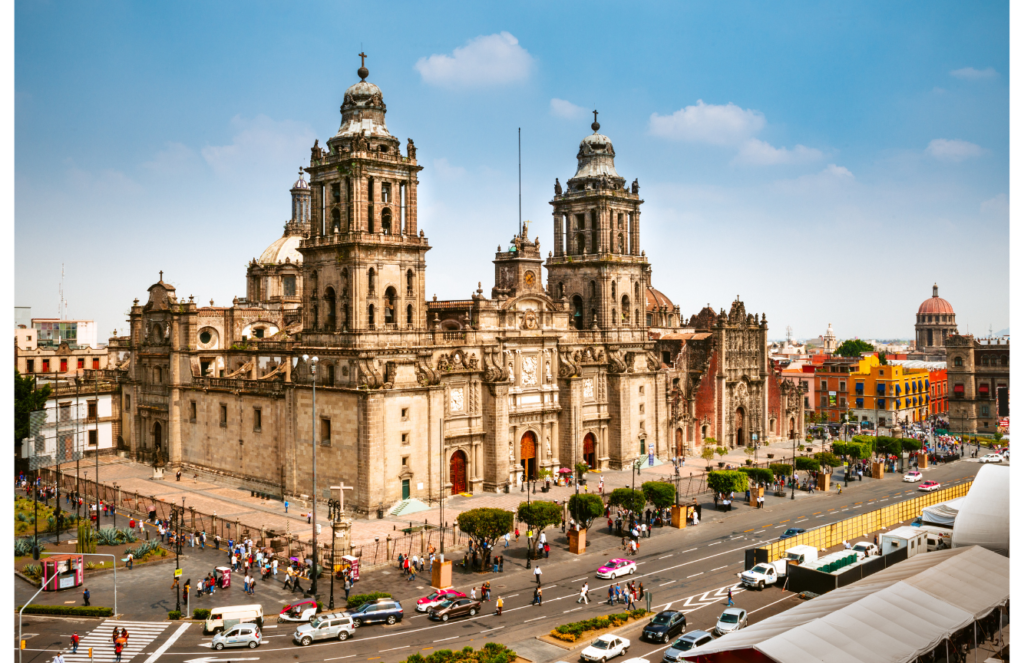
Mexico City, Mexico
Mexico City is one of the most practical choices in Latin America if you’re planning to stay somewhere for a month. It’s a large and busy place, but once you settle into the right neighbourhood, it can feel manageable and even quite relaxed day to day. There’s plenty to do, but it’s just as easy to focus on work, daily routines, and affordable living. Or have a read at our itinerary(but its only 4 day)
Cost of staying a month:
Most people spend between $1,000 and $1,500. Rent in central neighbourhoods like Roma or Condesa will take up the biggest portion, but food, transport, and everyday expenses are usually low — especially if you eat locally and don’t go out all the time.
Visa situation:
Visitors from many countries get 180 days on arrival, which is generous and makes planning simple. No extensions or visa runs needed.
Internet and working conditions:
Most apartments and hotels in central neighbourhoods have decent Wi-Fi, and it’s common to find free connections in cafés and restaurants. If you’re planning to use your phone regularly or want a backup, prepaid SIM cards from Telcel or AT&T are easy to buy and offer solid coverage across the city.
Pros:
- Low cost of daily living
- Long visa allowance
- Good public transport options
- Wide choice of neighbourhoods with different paces
Cons:
- Air quality isn’t ideal, especially during dry seasons
- Noise and traffic can be a problem in some areas
- You’ll need to be cautious with belongings in busy places
Local tips:
Roma Norte and Condesa are two of the more comfortable areas for long stays — walkable, with parks, cafés, and a mix of locals and expats. Coyoacán is a bit quieter if you prefer a slower pace. A bit of basic Spanish will help with everything from grocery shopping to taxis.
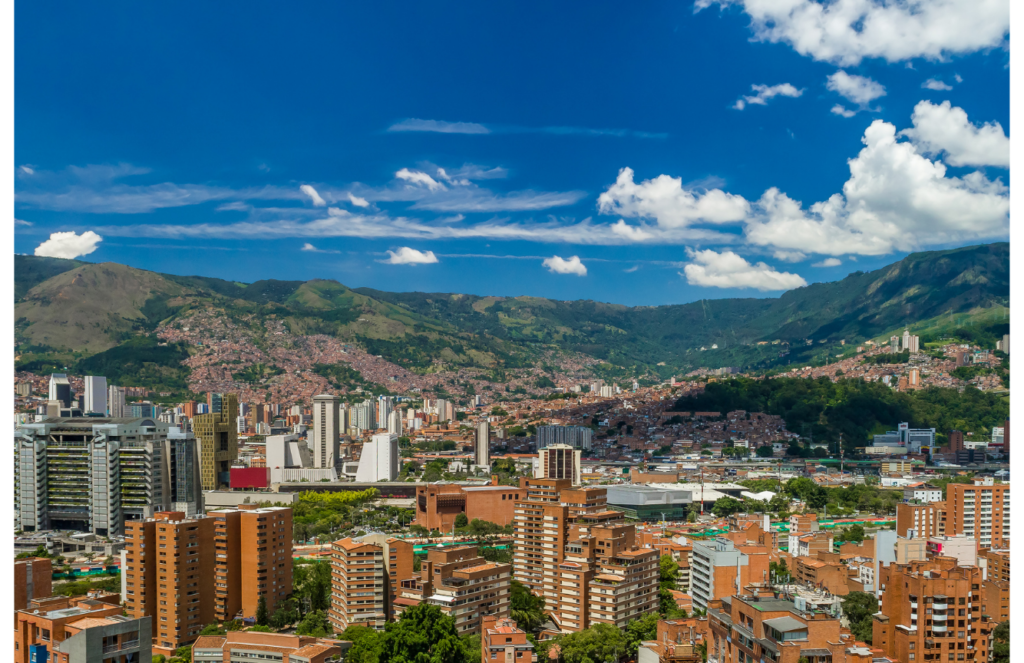
Medellín, Colombia
Medellín has become a popular long-stay spot in South America, especially for people working remotely. The city sits in a valley surrounded by mountains and has a mild climate that stays around 22–26°C year-round. It’s not a quiet town, but the pace of life is more relaxed than you’d expect from a city of its size.
Monthly budget estimate:
You can get by on $1000 to $2,000 per month. Rent is the biggest factor, but food, local transport, and daily expenses are generally affordable. If you avoid tourist-heavy areas, your costs go down even more.
Visa info:
Tourists from many countries can stay for 90 days, with the option to extend for another 90 at a local migration office. It’s a fairly straightforward process, but it’s best to plan ahead if you want the full 180 days.
Wi-Fi and work setup:
Wi-Fi is available in most apartments and hotels, especially in central areas like El Poblado or Laureles. Many cafés also offer free internet, and mobile data is affordable — local SIM cards from providers like Claro or Tigo are easy to buy and set up within minutes.
Pros:
- Year-round mild weather
- Low daily costs
- Solid infrastructure for long stays
- Lots of cafés and work-friendly spots
Cons:
- Some areas still have safety concerns — location matters
- Hilly terrain in parts of the city
- Limited English spoken outside tourist zones
Where to stay:
El Poblado is the most well-known area among visitors — it’s comfortable and has plenty of modern amenities. If you want something quieter and more local, Laureles is a good alternative with wide streets and a more residential feel.
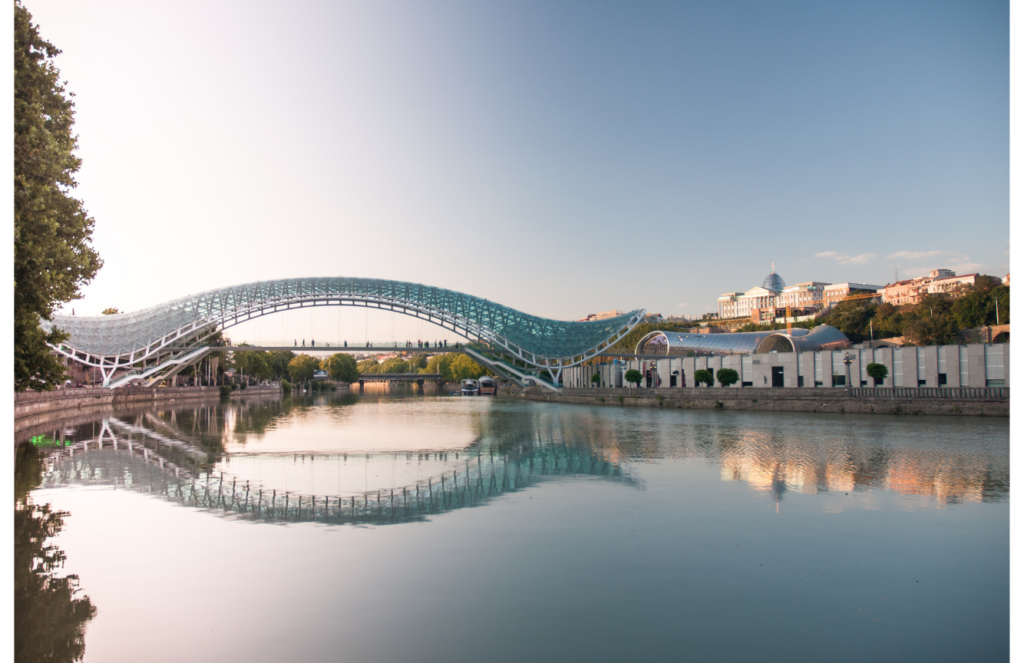
Tbilisi, Georgia
Tbilisi doesn’t usually top mainstream travel lists, but it’s one of the easiest places to stay for a month — or even longer. The city is laid-back, affordable, and has visa rules that are much more flexible than most countries. It’s also becoming a quiet favourite for remote workers who want something different from the usual hubs.
Estimated monthly cost:
Between $700 and $1,100 depending on your setup. Rent is cheap, and eating out is often more affordable than cooking at home. Local markets and small restaurants help keep costs low.
Visa policy:
Georgia offers a 1-year visa-free stay for citizens of many countries, which is incredibly rare. That alone makes it a solid option for long-term travel without extra paperwork.
Internet and work conditions:
Internet access is reliable throughout the city, with most accommodations offering fast Wi-Fi. Cafés and restaurants in central areas often have free networks, and SIM cards with generous data packages are inexpensive and widely available at kiosks or mobile shops.
Pros:
- Easy long-term entry (no visa stress)
- Low cost of living
- Mix of modern and traditional culture
- Growing international community
Cons:
- Infrastructure can be uneven outside city centre
- Air quality isn’t the best in winter
- Fewer international flight connections
Neighbourhood suggestions:
Vera and Vake are good starting points — safe, central, and with a mix of older buildings and newer rentals. Sololaki is another area worth checking out if you want something a little closer to the old town.

Bali (Canggu or Ubud), Indonesia
If you’re looking for somewhere tropical with plenty of creature comforts, Canggu is a practical choice. It’s one of the more developed parts of Bali and has everything from local warungs (small restaurants) to Western cafés, gyms, co-working spaces, and plenty of short-term rentals. It can be busy, but it’s also convenient — especially for a first-time visit to the island.
Monthly cost estimate:
Most people spend between $1,500 and $2,000 depending on housing and lifestyle. Monthly villa rentals can vary a lot, but daily costs like food and transport are generally low if you stick to local places.
Visa details:
Indonesia offers a visa-on-arrival for many nationalities that’s valid for 30 days and can be extended for another 30. If you’re staying longer, there are visa agent services in Canggu that can help with extensions or long-stay options.
Wi-Fi and work life:
Wi-Fi is standard in guesthouses, hotels, and most villas, though speeds can vary. Many cafés offer free internet and are used to people staying for a while. For mobile access, prepaid SIM cards from Telkomsel or XL Axiata are cheap and easy to buy at the airport or local shops.
What’s good:
- Lots of co-working spaces and cafés
- Huge range of food options
- Easy to find short-term rentals
- Welcoming to solo travellers
What to watch out for:
- Traffic can get heavy, especially during high season
- Not ideal if you want peace and quiet
- You’ll need a scooter to get around efficiently
Where to stay:
Berawa is popular with remote workers and has a good mix of cafés and co-living spots. Pererenan is a bit quieter and still close to everything. Avoid staying too far inland if you don’t want to spend a lot of time in traffic.
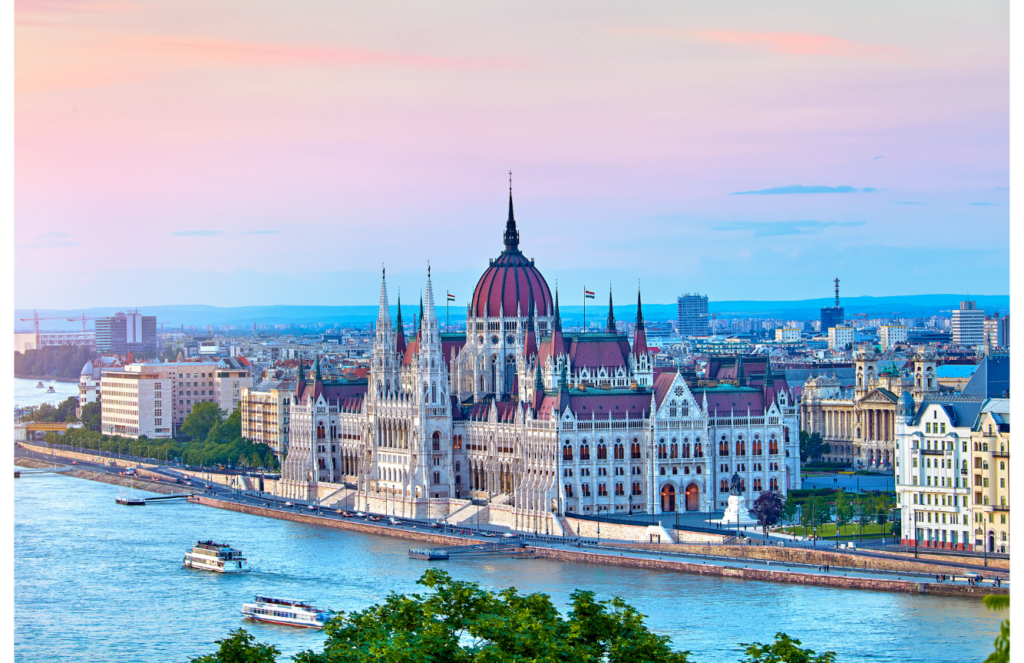
Budapest, Hungary
Budapest is a good choice if you’re looking for a European base that isn’t too expensive. It has solid public transport, a mix of old and new architecture, and a pace of life that’s fairly relaxed for a capital city. You can work during the day, grab dinner by the river, and not feel like everything is moving too fast around you.
Rough monthly cost:
Plan for around €1,000–€1,400. Rent is reasonable if you book ahead or stay a little outside the centre, and groceries and local restaurants are still fairly priced compared to Western Europe.
Visa info:
As part of the Schengen Area, Hungary gives most visitors 90 days of access within a 180-day period. It’s enough for a one-month stay, but keep in mind the overall Schengen limit if you’re travelling through Europe.
Internet and remote work:
Wi-Fi is fast and reliable across the city, even in budget accommodation. It’s easy to find free access in cafés, shopping centres, and public libraries. If you need mobile data, local SIM cards from Vodafone or Telekom are affordable and easy to set up.
Pros:
- Well-connected public transport
- Affordable compared to many EU capitals
- Lots of green spaces and thermal baths
- English is spoken widely in central areas
Cons:
- Winters can be long and grey
- Airbnbs in popular areas can be overpriced during tourist season
- Can feel a bit quiet outside the summer months
Neighbourhood notes:
District VII (Erzsébetváros) is lively and central, while Újlipótváros and parts of District XIII are quieter but still well connected. If you prefer more space and a slower pace, look at Buda side districts like District II.
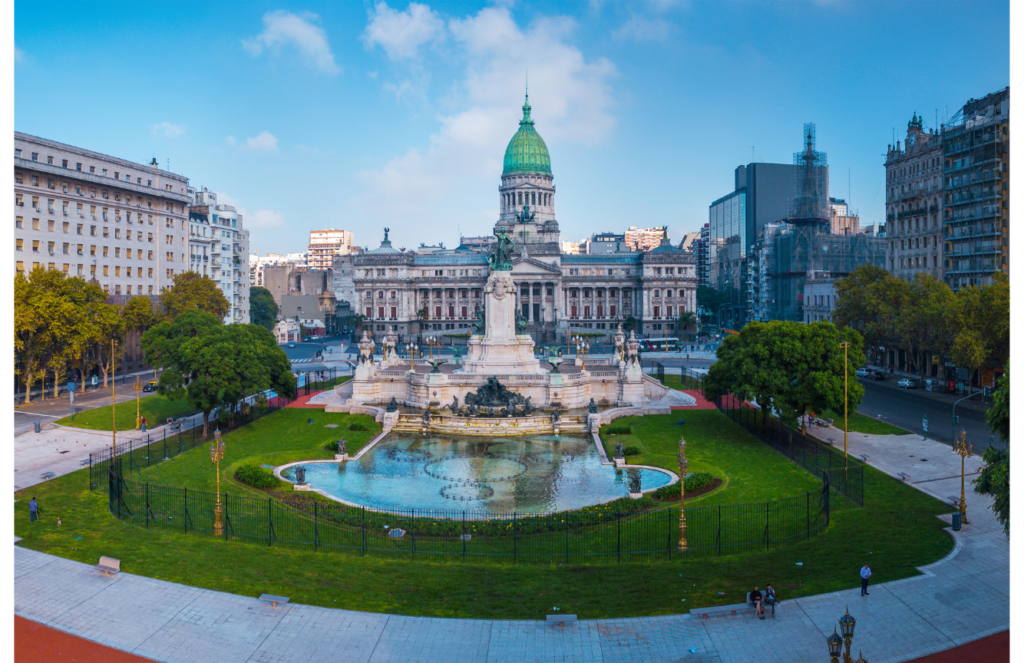
Buenos Aires, Argentina
Buenos Aires offers a lot of value for long-term travellers, especially with the current exchange rates. It’s a large city, but many areas feel like small neighbourhoods with their own rhythm. If you’re into arts, coffee, live music, or just a good walk through tree-lined streets, it’s easy to find your routine here.
Average monthly expenses:
A reasonable range is $900 to $1,300, depending on where you stay and how often you eat out. Local transport is cheap, and meals at non-touristy places can be very affordable.
Visa situation:
Many nationalities receive 90 days on arrival. Extensions are possible but require a visit to immigration. That said, the 90-day window is usually more than enough for a stay.
Internet and work environment:
Most hotels, apartments, and cafés in Buenos Aires offer good Wi-Fi. Public spaces like parks and transport hubs also have occasional free networks. For mobile data, prepaid SIM cards from companies like Movistar or Personal are easy to find and usually inexpensive.
Pros:
- Low daily costs with good value for money
- Culturally rich city with events, music, and art
- Walkable neighbourhoods with good public transit
- Plenty of grocery stores, markets, and cafés
Cons:
- Inflation and currency changes can be confusing
- Occasional political or transport disruptions
- Not every area feels safe — research before booking
Neighbourhoods to consider:
Palermo is the most popular among visitors — especially Palermo Soho and Palermo Hollywood — for the mix of cafés, parks, and rentals. Recoleta and Belgrano are also good options if you prefer something quieter and more residential.

Istanbul, Turkey
Istanbul sits at the edge of two continents, and the mix of cultures shows up in everything — from food to architecture to how the city moves. It’s big, busy, and sometimes chaotic, but also full of character. For a one-month stay, it offers both the pace of a major city and plenty of quiet spots if you choose your neighbourhood carefully.
Expected monthly costs:
You’re likely looking at $1,000 to $1,400 per month. Renting a short-term apartment in a central but non-touristy area keeps costs manageable, and public transport is affordable.
Visa overview:
Many travellers can stay visa-free for 90 days, while others need to apply in advance for an e-visa. It’s a fairly simple process either way, and 30 days is usually no issue.
Internet and remote work:
Wi-Fi is widely available in hotels, rentals, and most cafés. Some public areas also have free networks. For mobile use, Turkish SIM cards from Turkcell or Vodafone are easy to buy with your passport and come with good data plans for short-term stays.
What works well:
- Lots of neighbourhood options depending on your pace
- Access to both modern and traditional lifestyles
- Street food and public markets are affordable
- Ferries and trams make getting around easier than expected
What might not:
- Traffic can be heavy at almost any time of day
- Hilly terrain and staircases in many neighbourhoods
- Can feel overwhelming if you’re not used to big cities
Where to stay:
Kadıköy (on the Asian side) is often preferred by remote workers for its relaxed feel and good cafés. On the European side, Cihangir and parts of Şişli are solid picks — central, but not right in the middle of tourist areas.
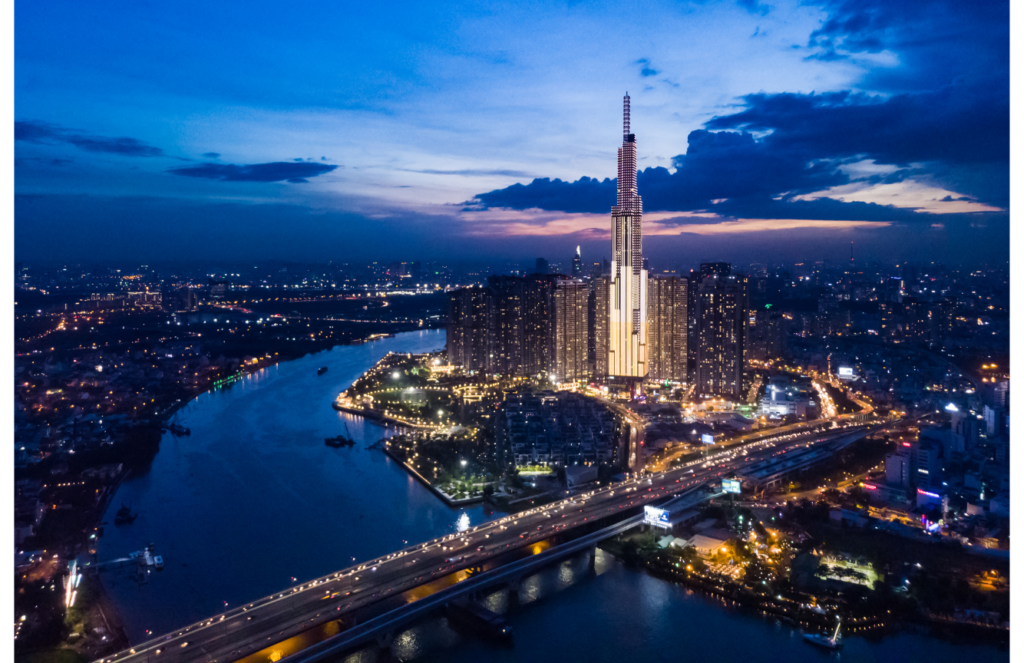
Ho Chi Minh City, Vietnam
Ho Chi Minh City, still known as Saigon to many locals, is fast-paced, affordable, and full of energy. It may not be the quietest place, but if you’re looking for a low-cost city with solid infrastructure and strong community options for remote workers, it’s a dependable pick for a month-long stay.
Typical monthly expenses:
Most people spend between $800 and $1,200. Apartments are widely available on short-term rental sites, and eating out is often cheaper than cooking. Local food is especially good value, and transport costs are minimal if you use ride-hailing apps.
Visa situation:
Vietnam offers e-visas for 90 days to many nationalities. The process is online and fairly straightforward. Always double-check current rules before booking, as visa policies have gone through changes in recent years.
Wi-Fi and remote work:
Internet is fast and available in most accommodations and cafés. Short-term visitors can easily pick up a local SIM card with data from providers like Viettel or Mobifone — they’re affordable and work well throughout the city.
Positives:
- Low cost of living with great street food
- Efficient ride-hailing apps make it easy to get around
- Reliable internet in most areas
- Growing international community
Potential drawbacks:
- Noise and traffic are hard to avoid
- Air quality isn’t always great
- Sidewalks can be tricky to navigate in some parts
Where to stay:
District 1 is the central hub, but for a more relaxed environment, District 3 or Thao Dien in District 2 are better suited to long stays. These areas have a mix of local and expat life, and it’s easier to find apartments with decent Wi-Fi and quieter surroundings.

How to Plan Your One-Month Stay
Once you’ve picked a city, the next step is figuring out the basics — where to live, how to stay connected, and how to make the most of your time without overcomplicating things.
Finding a place to stay
For a one-month stay, platforms like Airbnb, Flatio, and Facebook housing groups work well. Many hosts give discounts for 28+ day bookings, and you’ll often find better value if you reach out directly and negotiate. If you’re staying longer than a month, co-living spaces or short-term rentals through local agencies might make more sense.
Staying online
Most places in this list have decent internet, but speeds can vary depending on where you’re staying. If you rely on Wi-Fi for work, always check reviews or message the host to confirm the connection is stable. Bringing a local SIM card with data or using an eSIM as a backup is also a good idea — especially in cities where occasional power cuts or signal drops happen.
Staying online
Many of these cities have public transport that’s affordable and reliable — metros, buses, or light rail. In places without solid public systems, ride-hailing apps like Grab, Bolt, or Uber (where available) usually do the job. In a few cities, renting a scooter or bicycle for the month might actually be the most efficient choice.
Finding community
Spending a month somewhere can feel a bit isolating at first — but it doesn’t have to stay that way. Facebook groups for expats, Meetup.com events, and local cafés or co-working spaces are good ways to connect. Even a weekly language exchange or fitness class can help you settle in more easily.
Finding community
Local ATMs usually offer the best rates, but fees can add up. Consider using a travel-friendly debit or credit card with no foreign transaction fees. Tracking your daily spending for the first few days can also help you adjust quickly to local prices and avoid overspending early on.
Final Thoughts
A full month in one city gives you something that short trips usually don’t — a routine. You start to recognise familiar faces, find go-to spots for coffee or groceries, and get a better sense of how a place really works. It’s not just about sightseeing — it’s about living somewhere new, even if it’s only temporary.
Each city on this list has its strengths, and the right one for you depends on what you value most — cost, climate, community, or simply curiosity. There’s no single best option, but there are plenty of good ones.
If you’re thinking about trying out slow travel or just want a change of scenery for a few weeks, any of these cities is a solid place to start.
How do I choose the right city for a one-month stay?
It depends on what matters most to you. If you’re on a budget, cities like Chiang Mai or Ho Chi Minh City are affordable. If you care about walkability, Lisbon or Budapest are good picks. Think about visa rules, weather, cost, and your daily habits — that usually narrows it down.
What kind of accommodation should I book for a month?
Apartments are usually the most practical. Airbnb, Flatio, and local Facebook groups often have monthly discounts. In some cities, co-living spaces or short-term rentals with local agents can be even cheaper. Just make sure to check Wi-Fi reviews and location before booking.
Is it better to get a SIM card or rely on Wi-Fi?
Both. Wi-Fi is usually fine for most things, but having a SIM card with data is helpful for maps, translations, and backup if your internet drops. Local SIMs are cheap and easy to get in every city on this list.
Is staying a month really that different from a short trip?
Yes — in a good way. You stop rushing. You learn how the city works. You get to be a regular somewhere. It’s less about checking off sights and more about enjoying your day-to-day in a new place.

